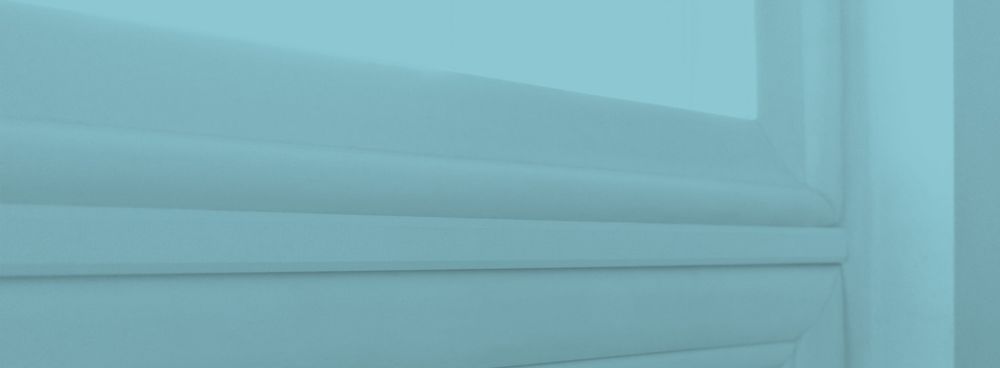
What is STC Rating?
STC rating (Sound Transmission Class rating) is a score given to a building’s surface (wall, ceiling, window, etc.) based on its ability to reduce sound coming through it.
STC rating goes from 25 – 65. The higher the rating, the less noise penetration. A rating of 25 is no soundproofing, and 65 is complete soundproofing. A standard single-pane window would have an STC rating of 25. Most “soundproof” products have an STC rating in the range of 35 – 55. Industry average for STC-rated windows is 38.
Video: STC Ratings of Materials

STC rating is a way to compare products for their ability to stop the transition of sound. Using this number you can compare various products using the same rating system. You can compare window to window, but also window to door for their ability to stop outside noise from coming into your space. This will help you understand which surfaces are allowing the most sound into your home.
STC Rating Chart
This STC rating chart shows a variety of building materials, their average STC rating and what noise can and cannot be heard at that rating. Specific products for these building materials will vary, so talk to the manufacturer to get the exact STC rating before purchasing.
| BUILDING SURFACE | STC RATING | SOUNDS LIKE |
|---|---|---|
| Single-Pane Window | 25 | Normal speech is clear |
| Double-Pane Window | 33-35 | Loud speech is clear |
| Indow Insert & Single-Pane Window* | 39 | Loud speech sounds like a hum |
| Indow Insert & Double-Pane Window** | 42-45 | Loud speech/music mostly blocked except for bass |
| 8" slab | 45 | Loud speech cannot be heard |
| 10" Masonry Wall | 50 | Loud music barely heard |
| 65+ | "Soundproof" |
Things to note: STC rating of 25 is what can be easily heard. STC rating of 38-42 is considered good soundproofing for residential. STC rating of 50-65 is professional, commercial soundproofing for recording studios, etc.
Other Sound Transmission Definitions
These terms and definitions are related to Sound Transmission Class and will help provide the full picture of how sound is measured.
dBa – A-weighted decibels. Measurement of sound as perceived by the human ear. Decibels relate to all sound possible (that can be perceived by say, a dog). A-weighted decibels are a scale of measurement for all sound that can be heard by humans, starting with zero as the lowest threshold of human hearing and going up to 110 dBA for jet fly-over/indoor rock band.
Transmission Loss – How much sound is lost going through a material. When sound reaches an object, some of the noise vibrations are reflected by it, some are absorbed, and some travel through it. The amount of sound that does not travel through it, is considered loss. It is the difference between the sound going into the object and the sound coming out the other side.
Frequency (Hz) – Sound is vibrations that travel through the air. Frequency is the speed of the vibrations. Frequency is measured in units of Hertz (Hz). Hertz measure the number of wave cycles per second. Low frequency sounds, like thunder or a train, would have a lower Hz. High frequency sounds, like a whistle or a bird chirping, would have a higher Hz.
For more definitions see our glossary of acoustic terms.
While STC rating can provide a good indication of how a material or product will perform against sound in general, it isn’t the whole picture. That’s why it’s good to keep these other definitions in mind. Certain sounds or noises will affect different people differently. STC rating is one number that shows general sound resistance, but does not take Hz into account.
STC Rating Limitations
STC is a single number used to describe the ability of an assembly (how a product is put together) to reduce noise against a wide range of frequencies. An STC rating alone won’t show what Hz will be blocked. STC rating only gives you an overall average of noise blocking.
Different products work differently to block different noise so you must compare exact product assemblies to each other (e.g.: a double-pane window with the same air gap). Talk to the manufacturer about what their product can block if you are having issues with a particular noise (e.g.: dog barking, a train horn).
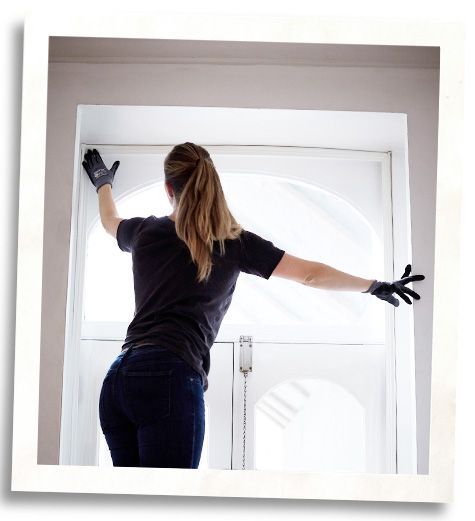
STC Rating Windows
STC rated windows range from 25-35. This is for regular windows without the addition of soundproofing materials. The STC rating of windows can be affected by: whether they are single or double-pane, the size of the gap between the panes, if gas is inserted between the panes, the thickness of the glass, and how airtight they are.
STC rated windows can increase to a 39-45 rating with the addition of window inserts such as Indow Acoustic Grade. Indow inserts are made of acrylic, which absorbs and resists sound better than glass. Adding another layer to your window via a window insert also creates an air pocket that insulates against sound. STC rating windows of 42-45 usually only happens when Indow window inserts are added to double-pane windows.
STC Rating Chart For Windows
This STC rating chart for windows goes down from lowest to highest STC rated windows to represent the quieter environment you will experience.
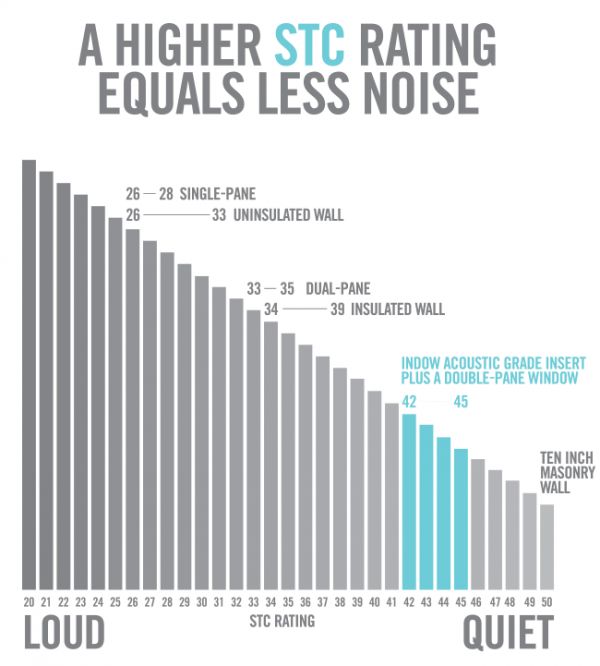
Is Complete Soundproofing Possible?
Our STC rating chart above only goes to 50 because STC rated windows are in that range. The STC rating goes all the way up to 65. Most products don’t promise anything above 55 and even at a rating of 60, it still doesn’t guarantee complete soundproofing. Nothing is completely soundproof. You cannot stop outside noise completely from entering your space. Anywhere air can get in, noise can get in.
*We want to ensure our inserts help solve your noise problem. Overall noise reduction depends on the amount of noise coming through your walls, ceilings, floors, doors, and existing windows. Noise reduction will be less when placed over double-pane windows. Read our full Noise Reduction Sheet to learn more.
Get a Free Estimate
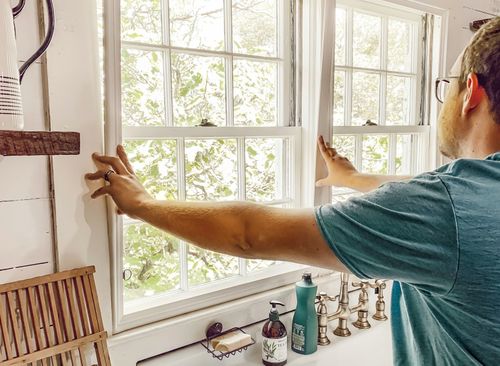
WE SHIP TO YOU!
You're one step closer to creating more comfort & quiet in your home.
We value safety and privacy. We will never share, sell, or rent your data to third parties not directly related to your purchase or consideration of our products. Read our full policy here.
